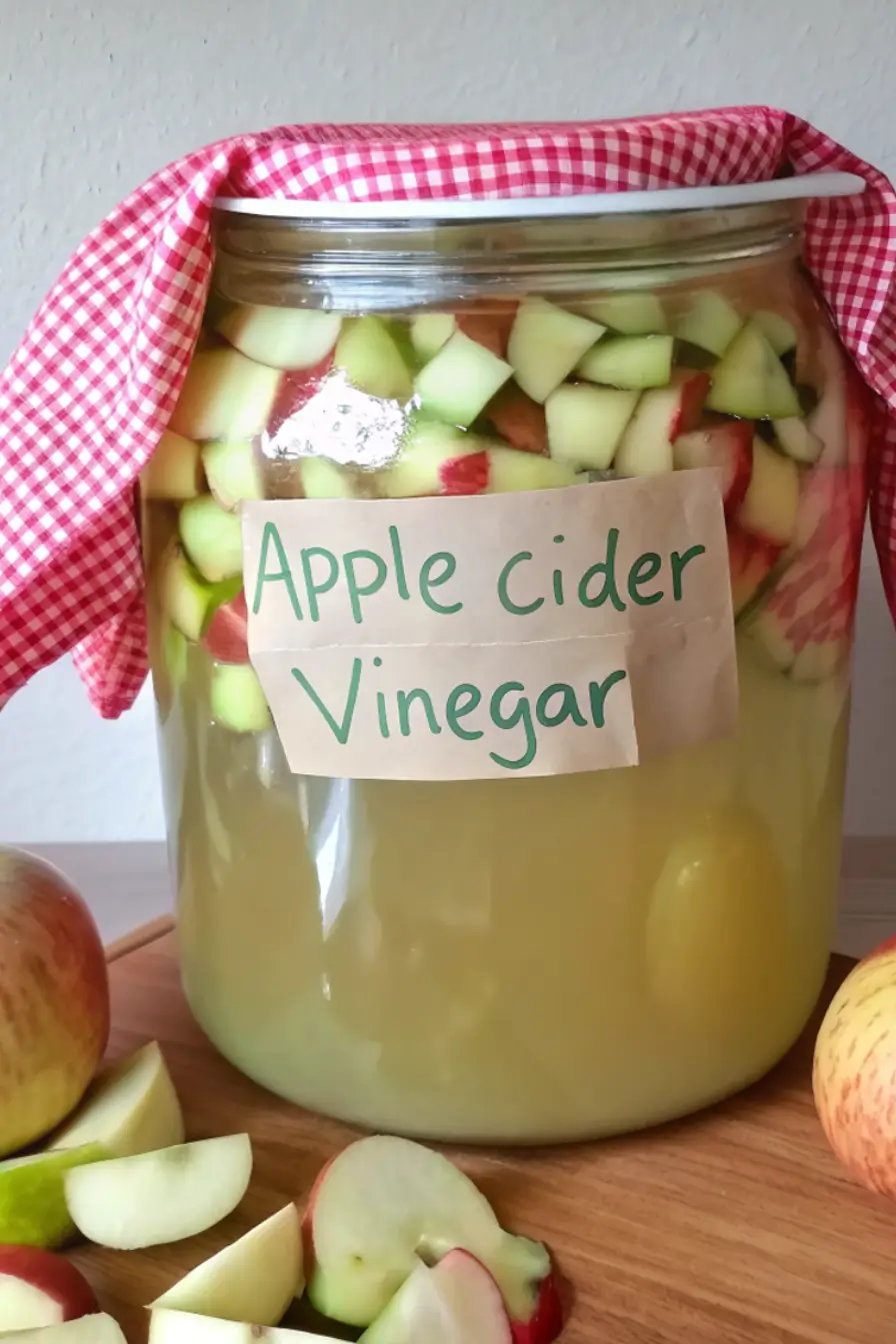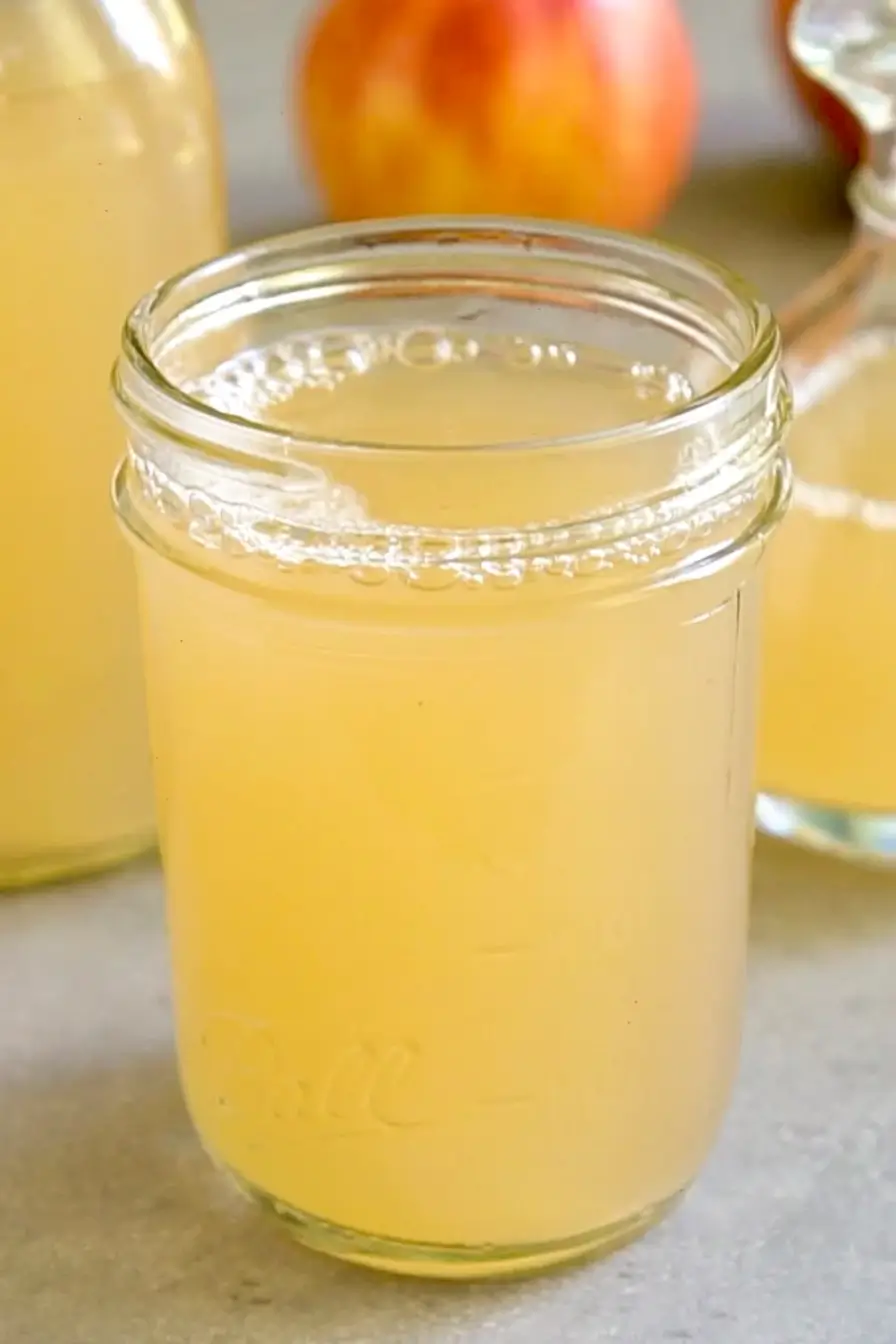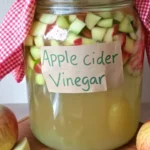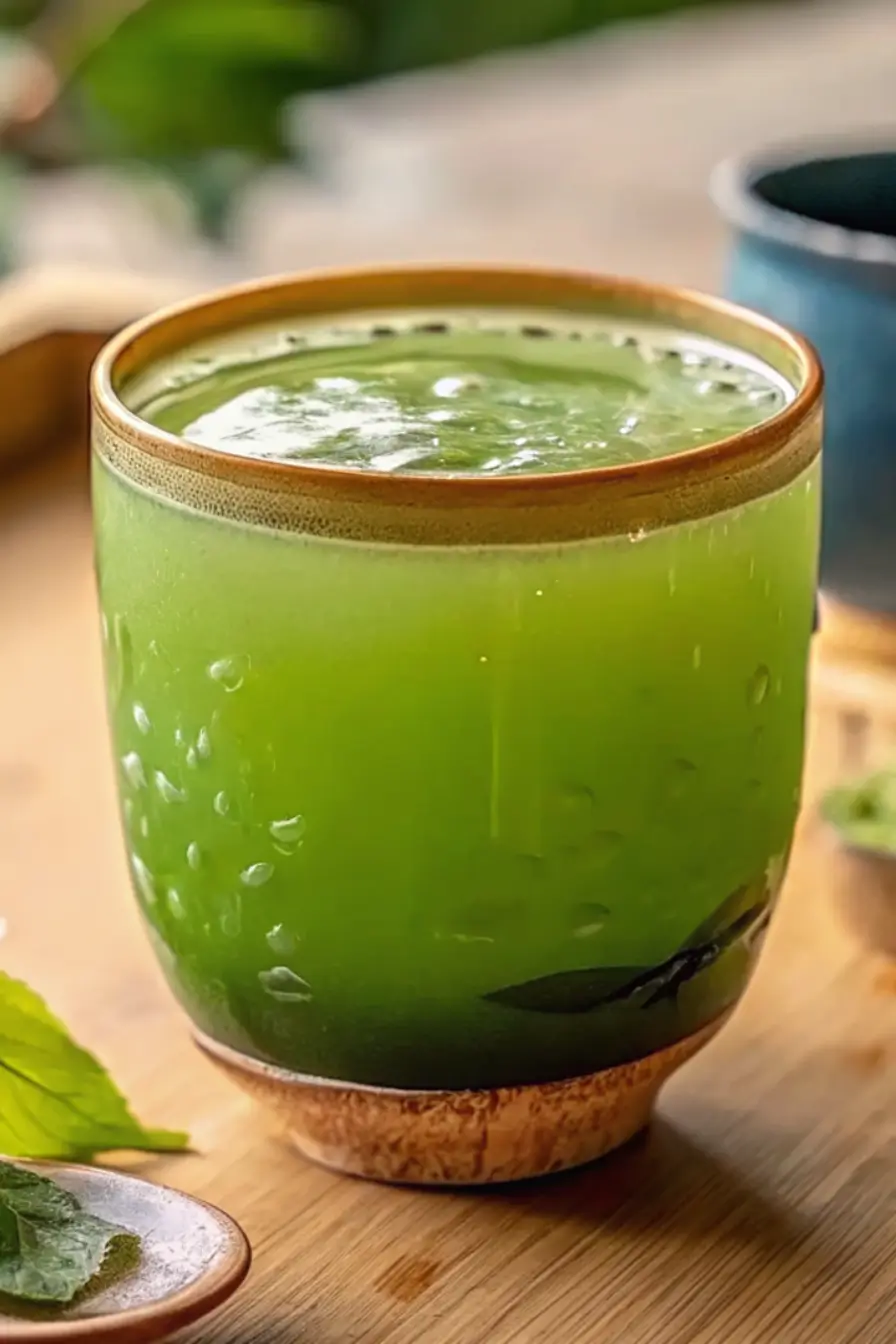Ever wonder how to make your own apple cider vinegar recipe at home—with just scraps? No special equipment. No complicated steps. Just a jar, some cores, and a bit of time.
I had just wrapped up baking our favorite apple cinnamon muffins when Dylan toddled over, clutching a few firmer apple cores we’d saved. I popped them into an old quart jar, poured in warm water from the kettle and a couple spoonfuls of sugar—just enough to get things bubbling. I loosely covered it with a coffee filter (because, well, fruit flies don’t wait), and set it by the sunny windowsill where the morning rays warmed the glass.
After about a week, I caught that sweet-sharp scent wafting from the jar. The liquid had turned cloudy with a thin film floating on top—exactly what my grandmother’s notes described. I strained out the apple bits and let it sit another month, stirring every few days. The smell gradually shifted from fruity to that familiar vinegar tang.
Here’s what I’ve learned through three batches: don’t use too much sugar or it’ll taste syrupy. My family’s been making vinegar from scraps for generations, and honestly, there’s something magical about turning kitchen waste into liquid gold.
Table of Contents

What You Need for This Apple Cider Vinegar Recipe
You don’t need a fancy fermenting kit or a science degree. Just gather a few kitchen basics—most of which you’d normally toss in the compost.
Core Ingredients for Apple Cider Vinegar
- Apple scraps – Peels, cores, even bruised bits. (About 2–3 apples worth per quart jar.)
- Filtered water – Enough to fully cover the scraps. Avoid chlorinated tap water if you can.
- Sugar – 1–2 tablespoons per quart jar. Helps jumpstart the fermentation.
Helpful Tools to Have
- Clean glass jar – Quart-sized or bigger.
- Coffee filter or cheesecloth – To keep bugs out while letting the vinegar breathe.
- Rubber band or string – For securing the cover.
- Wooden spoon – For stirring every few days.
Optional: mesh strainer for removing solids later.
How to Make Apple Cider Vinegar at Home
This apple cider vinegar recipe works in two stages: first, fermenting the apple scraps into a sweet-smelling liquid, and second, letting it slowly turn into vinegar. No rush—just let nature do its thing.
Step-by-Step Fermentation Process
- Fill the jar
Add your apple scraps until the jar is about three-quarters full. Don’t pack them in tightly. - Add sugar water
Dissolve 1–2 tablespoons of sugar in warm filtered water. Pour it over the apples until fully submerged. Leave an inch of headspace. - Cover loosely
Use a coffee filter or cloth to cover the top and secure with a rubber band. - Let it sit and bubble
Place the jar in a warm, dark spot. Stir every 2–3 days. After about a week, it should smell lightly sweet and yeasty. - Strain and wait
When it turns cloudy and bubbles appear, strain out the solids. Return the liquid to the jar, cover again, and let it ferment another 3–4 weeks, stirring weekly. It’s ready when it smells like vinegar.

Visual Cues to Watch For
- Cloudy liquid = fermentation is working
- A thin white layer (called the “mother”) = healthy fermentation
- Sour smell = done
What to Mix with Apple Cider Vinegar
Apple cider vinegar is versatile—whether you’re sipping it for wellness or using it in cooking. Always dilute before drinking.
Best Mixes for Weight Support
- 1 tablespoon apple cider vinegar
- 8 ounces warm water
- Optional: 1 teaspoon raw honey, juice from half a lemon, a pinch of cinnamon
Drink this in the morning on an empty stomach, but keep expectations realistic. It may support digestion or reduce appetite slightly, but it’s not a shortcut to fat loss.
Simple Kitchen Uses
- Mix 1 part vinegar with 3 parts olive oil for vinaigrette
- Add a splash to soups or beans
- Use it to quick-pickle onions or cucumbers
Discover traditional fermenting methods with simple vinegar recipes and kitchen-friendly preparation tips for making apple cider vinegar at home.
Print
Homemade Apple Cider Vinegar Recipe
- Total Time: 30 days
- Yield: 1 quart 1x
- Diet: Vegan
Description
Homemade apple cider vinegar from scraps using just apples, water, and sugar—easy, cost-effective, and full of old-school charm.
Ingredients
Apple scraps (cores, peels from 2–3 apples)
1–2 tablespoons sugar
Filtered water to cover
1 quart-size glass jar
Coffee filter or cloth
Rubber band
Instructions
Fill a clean jar about ¾ full with apple scraps.
Dissolve sugar in warm filtered water and pour over scraps until fully covered.
Cover jar with coffee filter and secure with rubber band.
Place in warm, dark spot for 5–7 days, stirring every 2–3 days.
Strain out apple solids and return liquid to the jar.
Let ferment 3–4 weeks, stirring weekly.
Once it smells vinegary, transfer to a clean bottle and seal.
Notes
Don’t use chlorinated water.
A thin white film or jelly layer (“mother”) is normal.
Avoid using too much sugar—it can make the vinegar taste syrupy.
- Prep Time: 10 minutes
- Cook Time: 0 minutes
- Category: Condiment
- Method: Fermenting
- Cuisine: American
Nutrition
- Serving Size: 1 tbsp
- Calories: 3
- Sugar: 0.5g
- Sodium: 0mg
- Fat: 0g
- Saturated Fat: 0g
- Unsaturated Fat: 0g
- Trans Fat: 0g
- Carbohydrates: 1g
- Fiber: 0g
- Protein: 0g
- Cholesterol: 0mg
Apple Cider Vinegar Ratios & Storage Tips
Getting the mix right makes a difference in taste and shelf life.
Apple Cider Vinegar to Water Ratio
For drinking: 1 tablespoon vinegar per 8 ounces water
For vinaigrette: 1 part vinegar to 3 parts oil
For pickling: Equal parts vinegar and water, depending on the recipe
For making ACV: Fill the jar with apple scraps, cover fully with sugar water (1–2 tablespoons sugar per quart)
Too much sugar and the vinegar will taste too sweet. Too little water and your scraps might mold.
How to Store Your Apple Cider Vinegar
Once it’s done fermenting:
- Strain it and pour into a clean bottle
- Seal tightly with a lid
- Store in a cool, dark place (no fridge needed)
- Keeps up to a year
Cloudy strands? That’s the “mother” and it’s perfectly normal.
Apple Cider Vinegar FAQ
How long does homemade apple cider vinegar last?
Up to 12 months, stored in a sealed bottle in a dark cabinet. It doesn’t need refrigeration.
Can I use whole apples instead of scraps?
Yes, but it’s not necessary. Scraps work just as well and help reduce waste.
Is it normal to see stuff floating in the jar?
Yes. The cloudy strands and the “mother” are signs of healthy fermentation.
Why does my vinegar smell like alcohol or rot?
If it smells off, it could be bad. Discard it if it smells like nail polish or spoiled fruit.
Turning Scraps Into Something Special
Making your own apple cider vinegar recipe doesn’t take much—just patience, peels, and a sunny windowsill. What started with leftover apple cores turned into a tradition I now look forward to every fall. It’s simple, cost-saving, and surprisingly satisfying.
And the best part? Every batch feels a little different, a little more yours. So go ahead—save those scraps and start your jar. You might just turn kitchen waste into your favorite pantry staple.
Lightened up, but never short on flavor!



